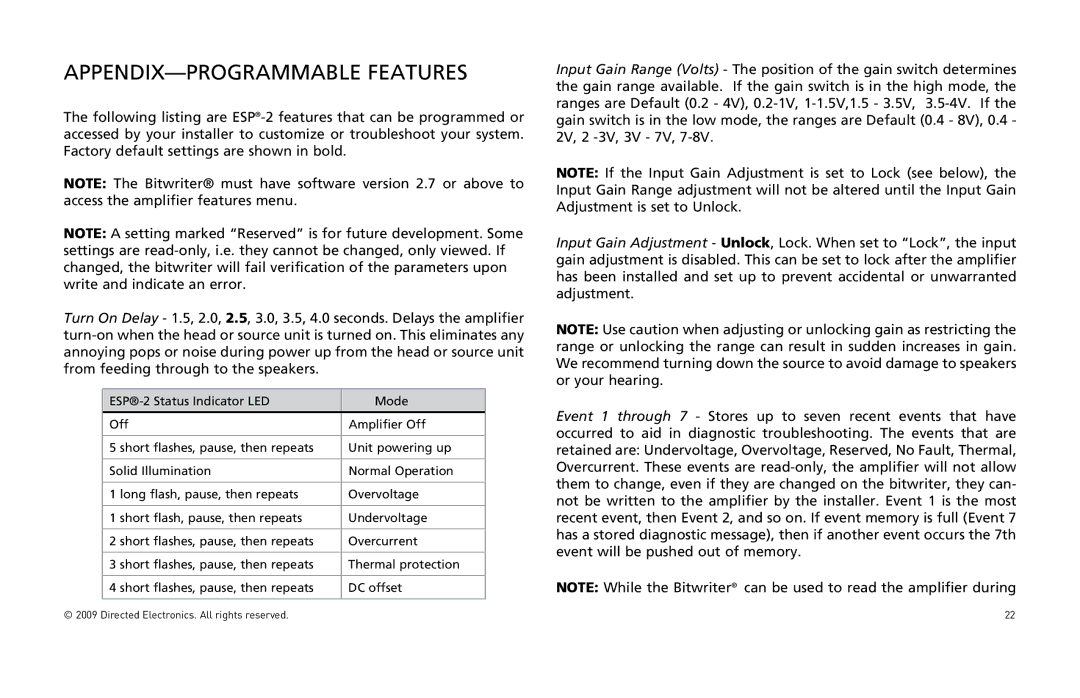APPENDIX—PROGRAMMABLE FEATURES
The following listing are
NOTE: The Bitwriter® must have software version 2.7 or above to access the amplifier features menu.
NOTE: A setting marked “Reserved” is for future development. Some settings are
Turn On Delay - 1.5, 2.0, 2.5, 3.0, 3.5, 4.0 seconds. Delays the amplifier
Mode | |
Off | Amplifier Off |
|
|
5 short flashes, pause, then repeats | Unit powering up |
|
|
Solid Illumination | Normal Operation |
|
|
1 long flash, pause, then repeats | Overvoltage |
|
|
1 short flash, pause, then repeats | Undervoltage |
|
|
2 short flashes, pause, then repeats | Overcurrent |
|
|
3 short flashes, pause, then repeats | Thermal protection |
|
|
4 short flashes, pause, then repeats | DC offset |
|
|
Input Gain Range (Volts) - The position of the gain switch determines the gain range available. If the gain switch is in the high mode, the ranges are Default (0.2 - 4V),
NOTE: If the Input Gain Adjustment is set to Lock (see below), the Input Gain Range adjustment will not be altered until the Input Gain Adjustment is set to Unlock.
Input Gain Adjustment - Unlock, Lock. When set to “Lock”, the input gain adjustment is disabled. This can be set to lock after the amplifier has been installed and set up to prevent accidental or unwarranted adjustment.
NOTE: Use caution when adjusting or unlocking gain as restricting the range or unlocking the range can result in sudden increases in gain. We recommend turning down the source to avoid damage to speakers or your hearing.
Event 1 through 7 - Stores up to seven recent events that have occurred to aid in diagnostic troubleshooting. The events that are retained are: Undervoltage, Overvoltage, Reserved, No Fault, Thermal, Overcurrent. These events are
NOTE: While the Bitwriter® can be used to read the amplifier during
© 2009 Directed Electronics. All rights reserved. | 22 |
